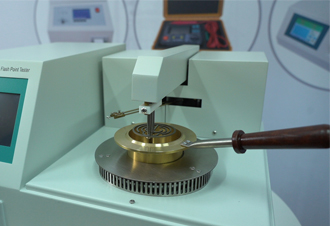 English
English


Transformer Performance Evaluation through No-Load and Short-Circuit Testing Methods
No-Load and Short-Circuit Test of Transformer
Transformers are essential components in electrical power systems, playing a critical role in voltage regulation and energy distribution. To ensure their optimal performance and reliability, engineers conduct various tests during the manufacturing and maintenance phases. Among these tests, the no-load test and the short-circuit test are two fundamental procedures used to assess a transformer's operational characteristics.
No-Load Test
The no-load test, often referred to as the open-circuit test, is conducted to evaluate the transformer's core loss and its no-load current. This test occurs when the secondary winding is left open while the primary winding is connected to the rated voltage. The primary purpose of the no-load test is to determine the transformer's magnetizing inductance and core losses, which primarily consist of hysteresis and eddy current losses.
During this test, the applied voltage is monitored along with the current and power consumed. Since the secondary winding is disconnected, the current measured is relatively small and primarily consists of the magnetizing current, which is essential for creating the magnetic field needed for transformer operation. The power measured during the test is mainly attributed to the core losses.
The no-load test provides key parameters, including the no-load losses and the voltage regulation of the transformer
. These parameters are crucial for understanding how efficiently a transformer will operate when energized but not supplying load.Short-Circuit Test
no load and short circuit test of transformer

In contrast, the short-circuit test is performed to determine the copper losses, equivalent circuit parameters, and impedance of the transformer when it operates under specific load conditions. During this test, the secondary winding is short-circuited, and the primary winding is supplied with a reduced voltage sufficient to allow full-load current to flow through the secondary.
When executing the short-circuit test, the voltage applied is significantly lower than the rated voltage, which limits the power dissipated during the test. This test allows engineers to measure the current, voltage, and power—primarily the copper losses—thus providing valuable information about the transformer’s behavior under load conditions. The results yield data on the resistance and reactance of the winding, enabling the calculation of the transformer's equivalent circuit model.
The parameters derived from the short-circuit test are vital for understanding the transformer’s voltage regulation and thermal performance. With this information, engineers can predict how the transformer will behave as load demands change and assess its ability to handle sudden increases in current, which is vital for system stability.
Importance of Both Tests
Both the no-load and short-circuit tests are instrumental in transformer evaluation. While the no-load test assesses the efficiency of energy loss when the transformer is not delivering any load, the short-circuit test examines how well the transformer performs under loaded conditions. Together, they offer a comprehensive picture – one that highlights potential efficiency issues, thermal limits, and operational longevity.
By conducting these tests, manufacturers and utility providers can ensure that transformers are not only built to specifications but also maintained in a manner that extends their lifespan and reliability. Additionally, accurate assessment of the transformer’s characteristics contributes to the overall efficiency and stability of electrical power systems, thereby promoting a more sustainable approach to energy use.
Overall, the no-load and short-circuit tests are indispensable in transformer testing and evaluation, providing insights that help in the design, operational monitoring, and eventual retirement of these vital components in electrical systems. Through meticulous testing, engineers can optimize transformer performance, enhance grid reliability, and ensure safe and effective power delivery to consumers.
-
Differences between open cup flash point tester and closed cup flash point testerNewsOct.31,2024
-
The Reliable Load Tap ChangerNewsOct.23,2024
-
The Essential Guide to Hipot TestersNewsOct.23,2024
-
The Digital Insulation TesterNewsOct.23,2024
-
The Best Earth Loop Impedance Tester for SaleNewsOct.23,2024
-
Tan Delta Tester--The Essential Tool for Electrical Insulation TestingNewsOct.23,2024





